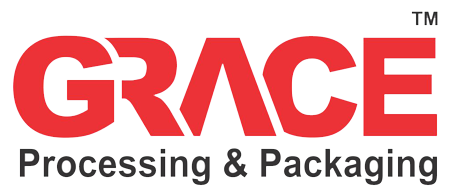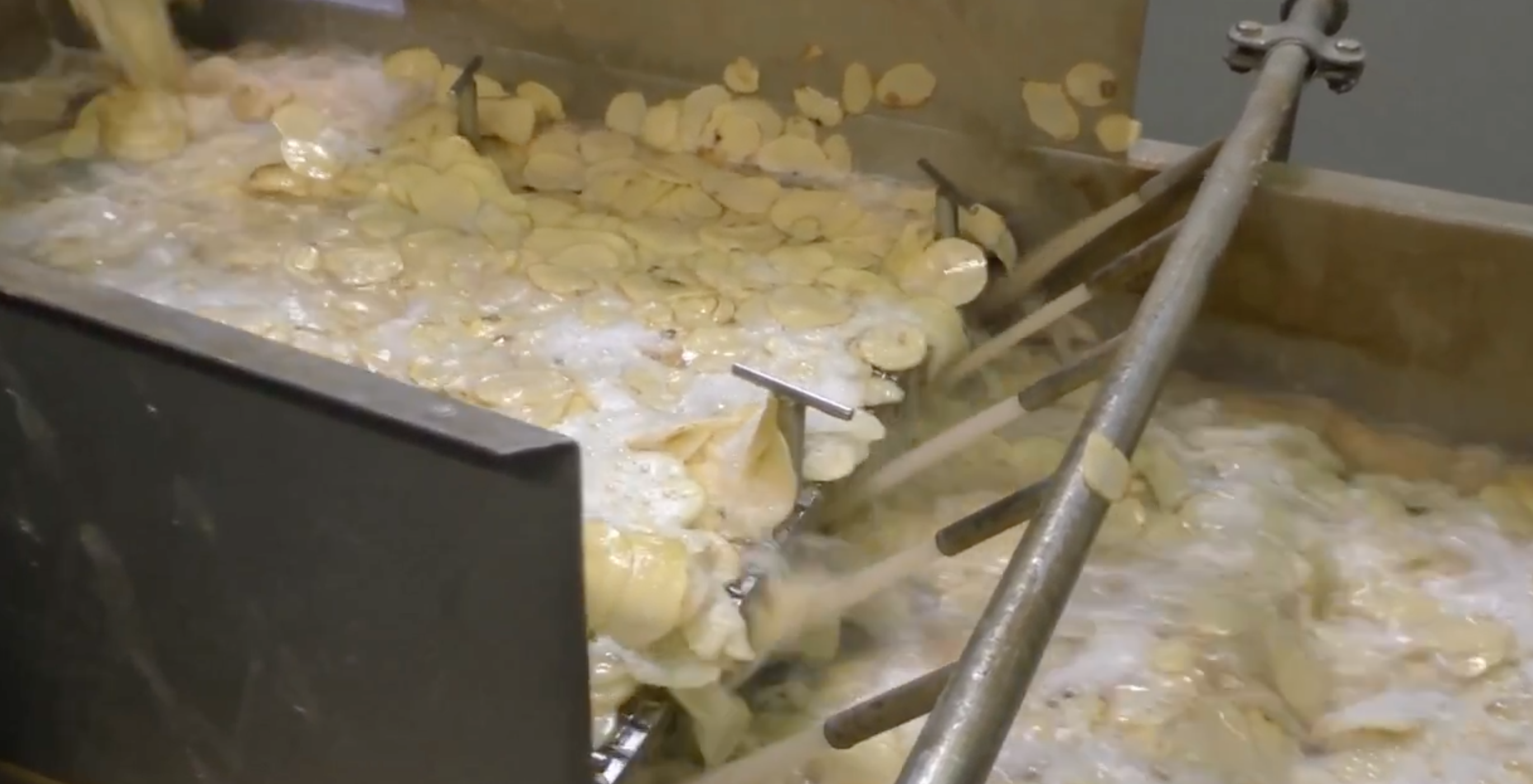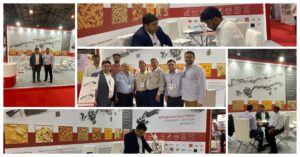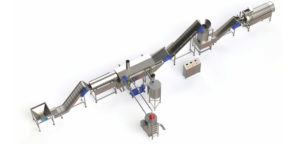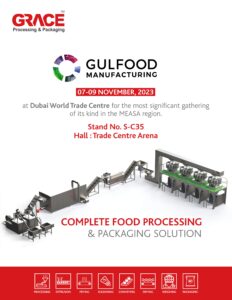GRACE – Processing & Packaging post will highlight the major steps involved in preparing and processing a raw potato into a delicious snack, the steps involved in frying a sliced raw potato, seasoning, and packaging a potato chip.
Potato chips are consistently a top seller in the highly competitive snack food market. To maintain popularity, manufacturers have developed a wide variety of flavors and styles. The manufacturing process, however, is fairly similar between them and manufacturers generally seek common objectives: a finished product with no defects, crumbs, or blisters and with a good appearance and a bright color.
Making potato chips begins with the raw potato and ends with the final packaged product. This post covers all the processes, from selecting the raw potato and washing to peeling to slicing, blanching to frying, after frying to seasoning and packaging.

Selecting, Procuring, and Receiving Potatoes
The raw product determines the quality of the finished processed product—poor quality potatoes cannot result in good quality chips so it is vital to use the best potatoes available.
Some of the most important factors involved in potato chip processing are potato variety, time of harvest, and handling practices, which include storage and reconditioning.
Some varieties are unsuitable for chip manufacture, even directly from the field, due to low specific gravity, high reducing sugars, size limitations, poor shape, or excess defects and/or peel.
The specific gravity of potatoes should be as high as possible (preferably above 1.08) to process potato chips. It is possible to process with lower specific gravity potatoes (as low as 1.06), but this will decrease the yield and increase oil uptake in the chips.
Storage and Reconditioning

Good storage helps prevent excessive loss of moisture, the development of rots, and sprout growth. The ideal storage temperature for potatoes is approximately 50–55°F (10–13°C). The sugar content of potatoes increases when stored at temperatures lower than 50°F (10°C), leading to darker potato chips because sugars increase and starch decreases at low temperatures. At high temperatures, sugars decrease as a result of respiration and of starch synthesis. The change from starch to sugar at low temperatures and the subsequent partial re-synthesis of starch from sugars at high temperatures may change the growth structure of starch granules sufficiently to alter its properties.
Temperature variations usually affect the quality of the starch and subsequently the texture of the cooked potato, so avoiding temperature fluctuations should maintain the quality of the potato for the prescribed storage life.
Another factor to consider is that potatoes shrink and lose weight in a variety of sources during storage: water, carbon dioxide, and decay (a result of rot organisms). The amount of loss is determined by storage conditions (e.g., temperature, humidity, air [evaporating power, composition, movement], maturity, and condition of the potatoes).
After harvest, the potatoes go through a two-week period where their skin thickens. Concurrently, starch is broken down (hydrolyzed) to sucrose, and the sucrose is broken down to reducing sugars (glucose and fructose), with carbon dioxide and water accumulating in the atmosphere. Therefore, the levels of oxygen, carbon dioxide, relative humidity, and temperature must be controlled and adjusted during the storage of the tubers. If proper ventilation is not provided when the potatoes are in storage, stress conditions can cause an accumulation of sugars. If poor ventilation, low humidity, disease, or temperature fluctuations occur when the potatoes are in storage, starch degradation can accelerate, resulting in higher sucrose values and an increase in reducing sugars.
Before processing, it will be necessary to recondition potatoes that have been stored for several months at temperatures below 50°F (10°C). With some varieties, reconditioning is needed even though storage temperatures have never been below that threshold.
Reconditioning is accomplished by storing potatoes in temperatures between 59–68°F (15–20°C) until frying tests or the level of reducing sugars are acceptable, otherwise, chips will be light colored. Relative humidity should be maintained between 85–90%, and air circulation should be controlled to produce acceptable potatoes.
If potatoes are stored properly after harvest, they need little or no reconditioning prior to frying to produce chips of acceptable color. If the sucrose is high (above 2%) before going into storage, it may be impossible to produce acceptable chips coming out of storage.
If the sucrose is high coming out of storage but was acceptable going into storage, generally it is possible to recondition the potatoes at a room temperature of 64–68°F (18–20°C) for 1–20 days to produce acceptable chips.
Washing, Peeling and Trimming
Potatoes are removed from storage in crates and placed in a crate dumper. This inverts the crate and deposits the potatoes into a hopper feeder. This unit helps control the product flow into the processing line and removes stones and loose debris from the bottom of the hopper.
In instances where the potatoes contain excessive dirt or grit, a rod washer or barrel washer is included in the process line to reduce the wearing of the abrasive peelers. The potatoes are conveyed along the barrel and cleaned by being tumbled and rubbed against each other and against the sides of the barrel while they are immersed (barrel washer) or sprayed (rod washer) with water. To aid in the elevation to a batch peeling at a high level, a vertical screw elevator can be supplied. This also provides effective removal of large stones as the stones sink to the bottom of the water-flooded tank and potatoes float to the screw infeed. Rocks are removed either with an automated rock remover or a manual lift-out basket.
The longer the potatoes are kept in storage, the thicker the skin will become, especially if the relative humidity is not kept high. Freshly dug potatoes have very little peel and this can be removed by mild brushing.
The equipment used to remove the peel relies on abrasive removal of the surface layers by rolling the potatoes on roughened rollers or drums. The effectiveness of these peelers strongly depends on maintaining intimate contact between the potatoes and the abrasive surface.
The abrasive surface must be kept clean, sharp, and unclogged by debris. Peeling loss depends on the size and shape of the potatoes, the depth of the eyes, the length of storage time, and the type of equipment used. The peel fragments are flushed out of the barrel with water sprays.
Peeled potatoes need to be rinsed thoroughly to ensure all enzyme released from the cells has been removed. If not rinsed, this enzyme will cause browning.
Peeled potatoes should be hand trimmed on an inspection table to remove residual skin, eyes, discolored areas, black spots, disease, and insect injury, sunburned, and/or green material.
The amount of trimming will depend on the efficiency of the peeling operation, the process requirements, and the raw material quality. Defective areas or unpeeled products not removed by trimming will result in defects in the finished chip.
Slicing
The potatoes are sliced by rotating them against stationary knives. Centrifugal force presses the tubers against the knives. The thickness of the slice will be varied, not only to meet consumer preferences, but also to fit the condition of the tubers, frying temperature, and time. Slices produced must be uniform in thickness to obtain uniformly colored chips.
It is important that blades are kept sharp and slices are checked periodically for uniformity of thickness. Slices with rough or torn surfaces lose excess solubles from the ruptured cells and absorb larger amounts of oil.
Specific gravity is a measure of the number of solids in the potatoes, or conversely the water content. Potatoes with a high specific gravity make better potato chips than those with a high water content. Specific gravity is directly related to the efficiency of processing, the time and temperature of frying, and the yield or recovery of finished chips. Potatoes with high specific gravity absorb less cooking oil during frying and yield more chips than those with low specific gravity. Typically, potatoes with high water content have fewer total solids and will yield fewer chips.
Potatoes low in specific gravity requires more energy to remove moisture, which results in greater oil absorption. They also require longer fry times at given temperatures to reach the desired moisture content of approximately 1.5%. Conversely, high specific gravity potatoes require less time to fry to 1.5% moisture. Also, potatoes low in specific gravity may break more easily during packaging and handling than those high in specific gravity.
Conditioning and Washing

After the potatoes are sliced, it is necessary to remove starch and other material from the surface of the potatoes so that the slices will separate readily and completely during frying. During this stage, the starch will leach out some of the reducing sugars. To prevent excess darkening of the slices during frying, the slices are washed and rinsed using both top and bottom sprays.
Cold water is normally employed in the conditioner for properly stored (low sugar) potatoes, whereas hot water is used for removing excess reducing sugars. There is no significant difference between washing potato slices in water ranging in temperature from 70–140°F (21–60°C). When processing borderline potatoes, the use of wash water at temperatures over 140°F (60°C) could make the difference between acceptable and unacceptable chips.
The major reduction in reducing sugars will occur when the wash water is at temperatures of at least 158°F (70°C). The dwell time in the wash water can be altered from 30 seconds to four minutes to improve the color of the potato chip. The conditioning step can be increased to six minutes on specially designed machines. Slivers and small pieces are continuously removed from the wash water by a motorized fines catch box.
Methods used to reduce the level of reducing sugars are:
- Leaching with hot water
- Treatment with hot water and chemicals
Washed slices are treated for about one minute in a solution of phosphoric acid and sodium citrate or citric acid; hydrochloric or phosphoric acid; citric acid or sodium citrate; calcium chloride and others. This method causes a reaction between the chemicals and the sugars so that the sugars cannot participate in a browning reaction.
Adjusting the pH of the water to that of the potato using organic acids should equilibrate the osmotic conditions between the two mediums and allow easier discharge of the sugar from the cells.
To remove excess water from the slices a water removal system that produces two high-velocity air curtains across the width of your conveyor or washer discharge and which lifts and separates product to remove surface water, starch, and particles can be used; further water can be removed by using a water removal system which blows water off, possibly with the aid of a vacuum action. This reduces energy consumption in the fryer and helps prevent residual main oil pump cavitation.
